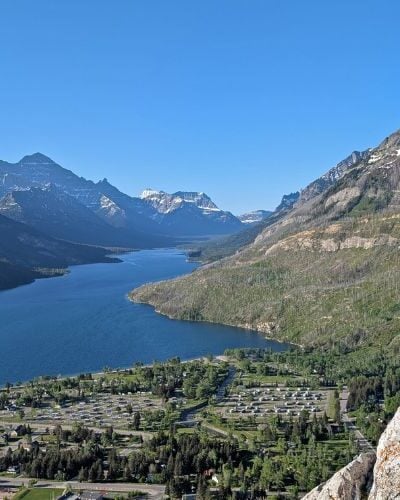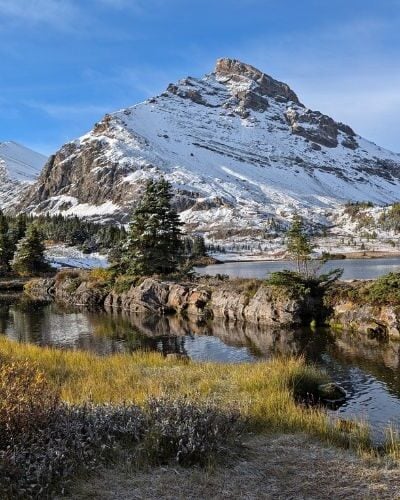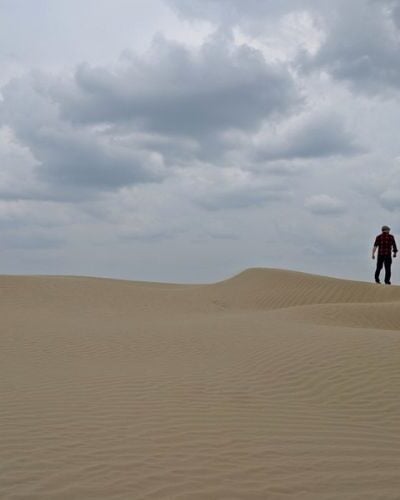There are around 7000 black bears on Vancouver Island, yet catching sight of one, let alone taking a photo at a safe distance, is not guaranteed.
For the best chance to see a black bear while visiting this beautiful region of Canada, join a guided tour. The probability of spotting them is much higher, it is far safer and the overall experience is more rewarding and immersive.
The small village of Tofino, on Vancouver Island’s wild west coast, is the ideal destination for a black bear watching tour. This beautiful coastal area is particularly rich with nourishment for black bears as well as other wildlife such as whales, sea otters, seals and bald eagles.
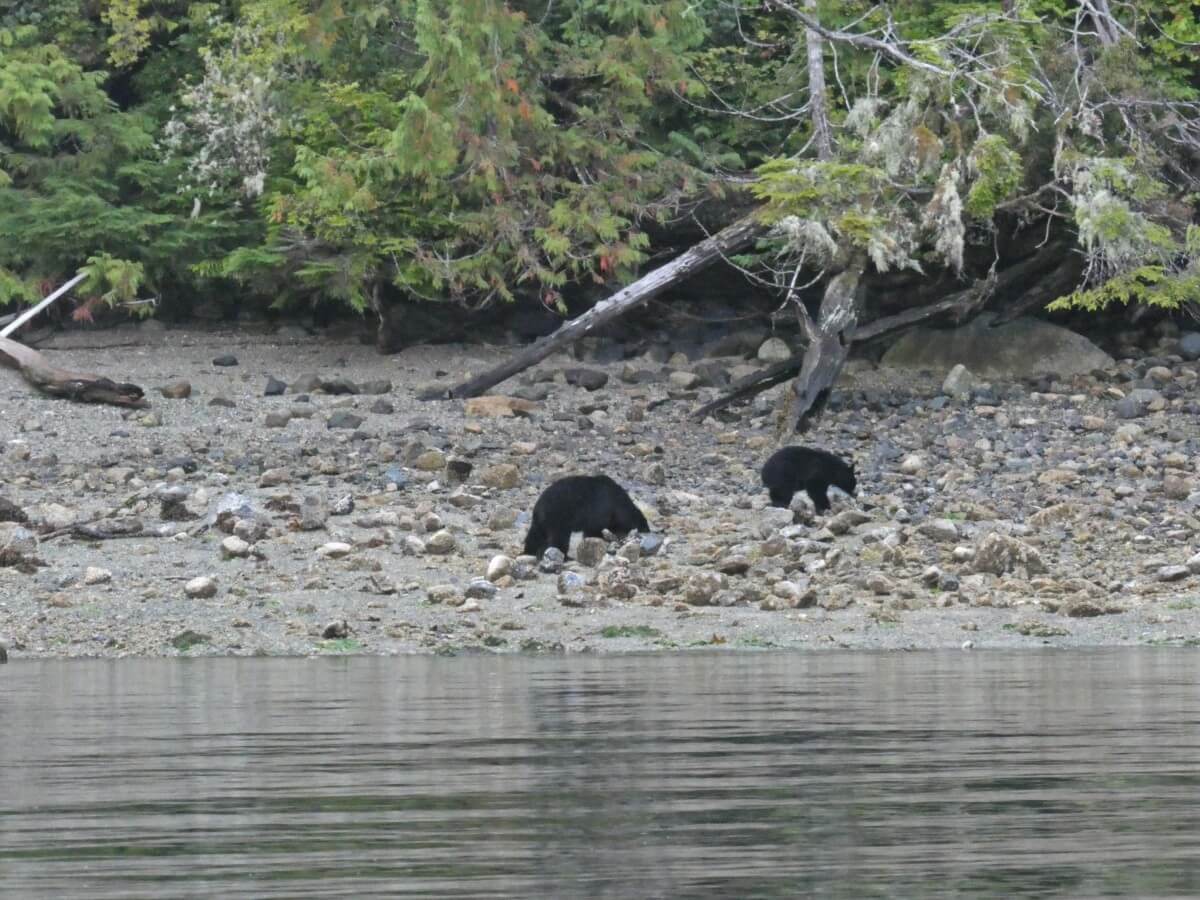
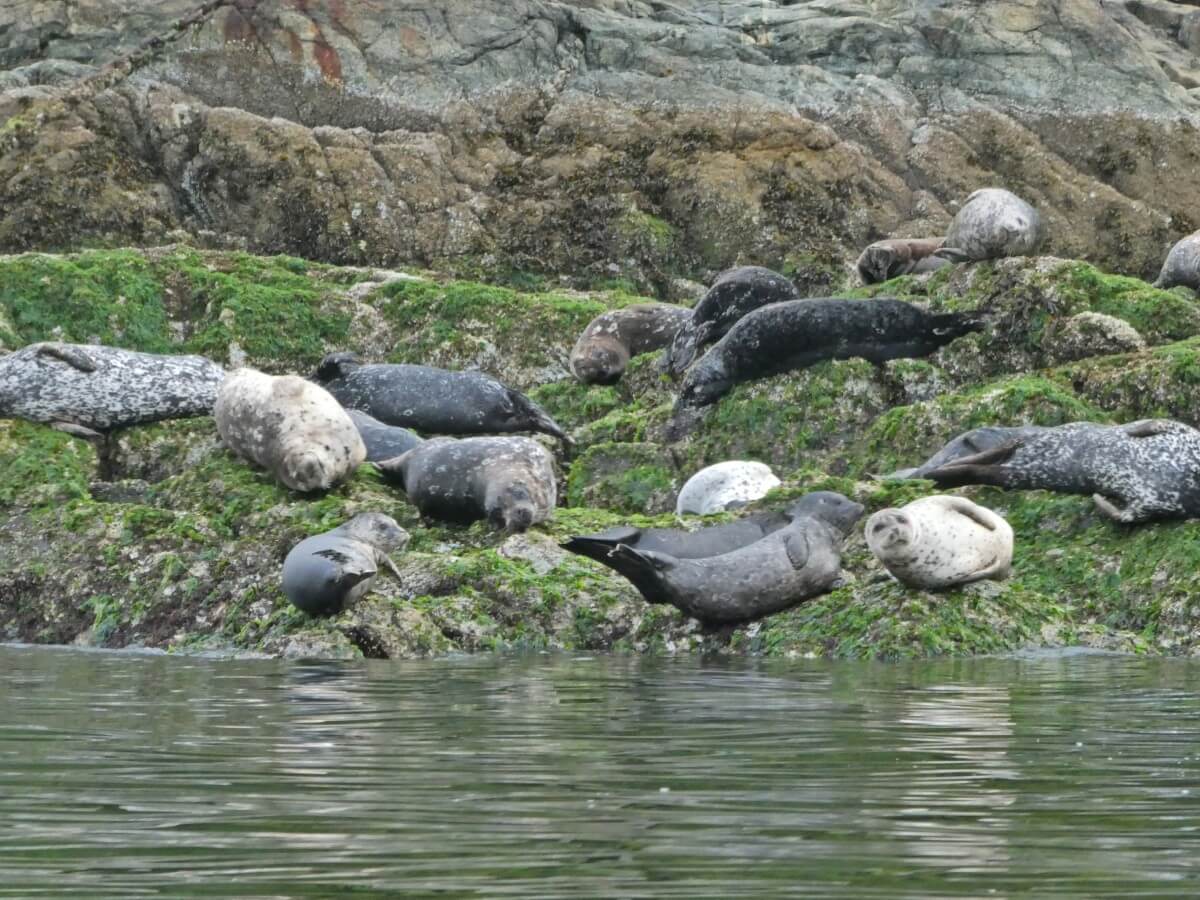
This guide covers everything you need to know about joining a guided black bear watching tour in Tofino, including our recent personal experience with Long Beach Nature Tours, the only local operator that is a member of the Commercial Bear Viewing Association.
We’ve been to Tofino countless times, but this three hour tour captured it all – misty mountains, sheltered ocean channels, wild headlands, lush temperate rainforest and the incredible wildlife that call it home.
Offering great value for both money and time (less than half a day), I’d say that it is a must do when visiting Tofino.
In partnership with Tourism Tofino and Destination BC. There may be affiliate links below. If you click and make a purchase, we may receive a percentage of the sale.
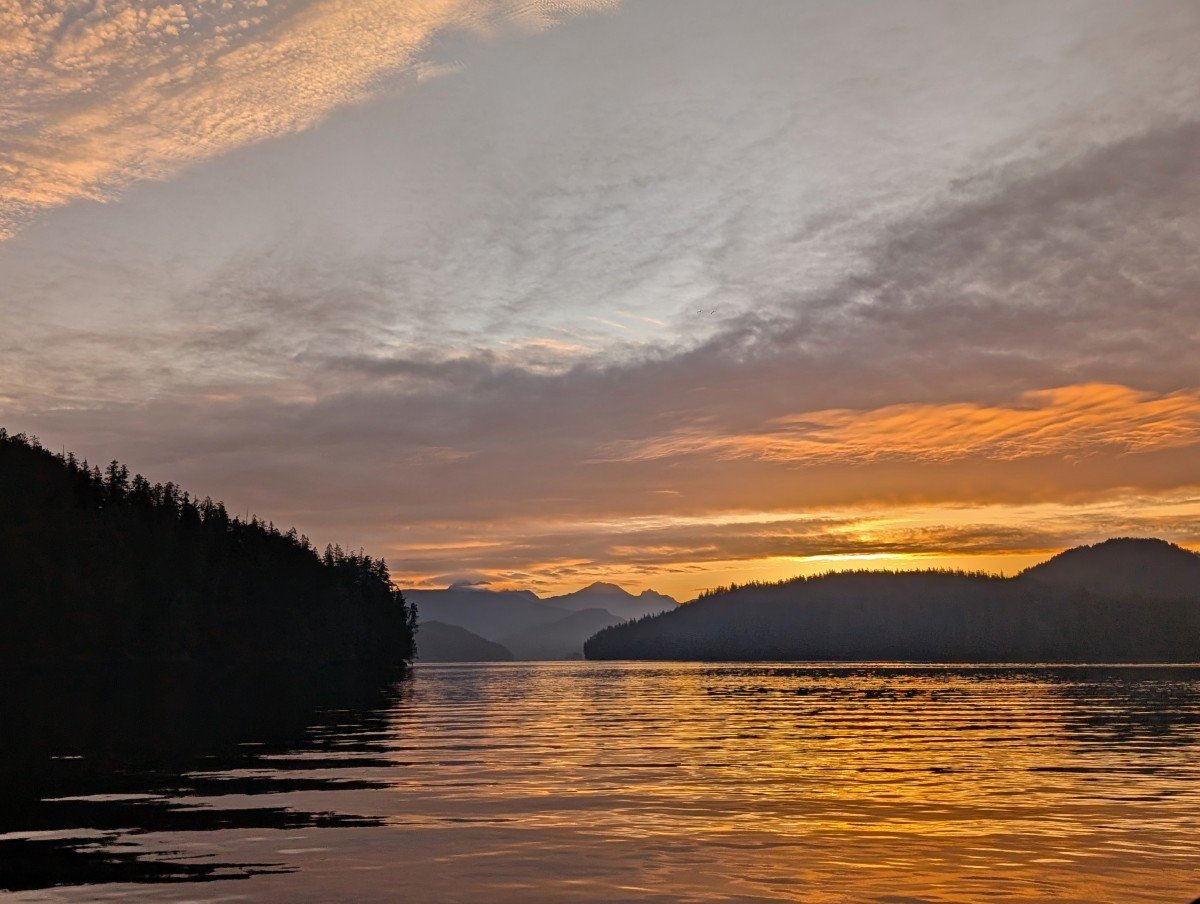
Bear watching in Tofino, Vancouver Island
Vancouver Island is situated off the West Coast of British Columbia, Canada. It’s about 450km in length and 100km wide. It has such a dense black bear population due to its abundant natural food sources and mild year round climate.
The weather is so temperate on Vancouver Island that most of the bears only go into a state of torpor (similar to hibernation) for a few months, if at all.
Tofino (population 2,500) sits on the edge of Clayoquot Sound, a network of inlets, channels, and islands with a myriad of beaches, coves and rocky headlands.
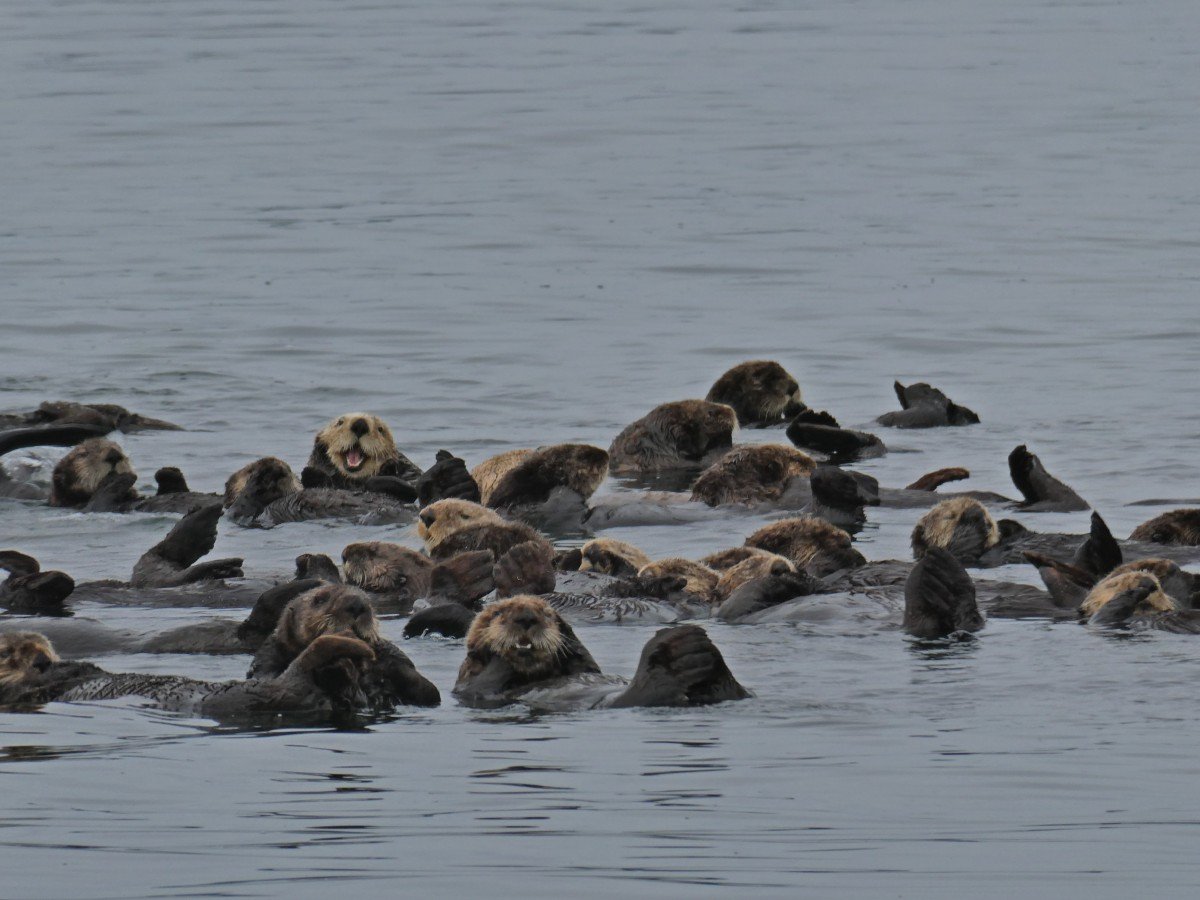
Thanks to its lush forests, salmon-filled rivers, productive mudflats, and warm ocean currents, the region is nutrient-packed and filled with food sources for black bears as well as a range of other animals including orcas, gray whales, humpbacks, porpoises, sea otters, sea lions, harbour seals and eagles.
From spring to fall, black bears roam the shorelines of Clayoquot Sound (‘clah-quat’) looking for food. The intertidal zone is particularly rich with nourishment, with roots, fish, berries, crabs, fish and insects all abundant.
Black bears are easy to spot on the beaches near Tofino as they have super dark pigmentation compared to those on the mainland. If you spot a large dark shape amongst the rocks, there’s a good chance it’s a bear!
Hoping to see a grizzly bear? This isn’t possible from Tofino but is from elsewhere on Vancouver Island – specifically Campbell River (about 3.5 hours drive) and Telegraph Cove (5.5 hours drive). We’ve done those tours too!
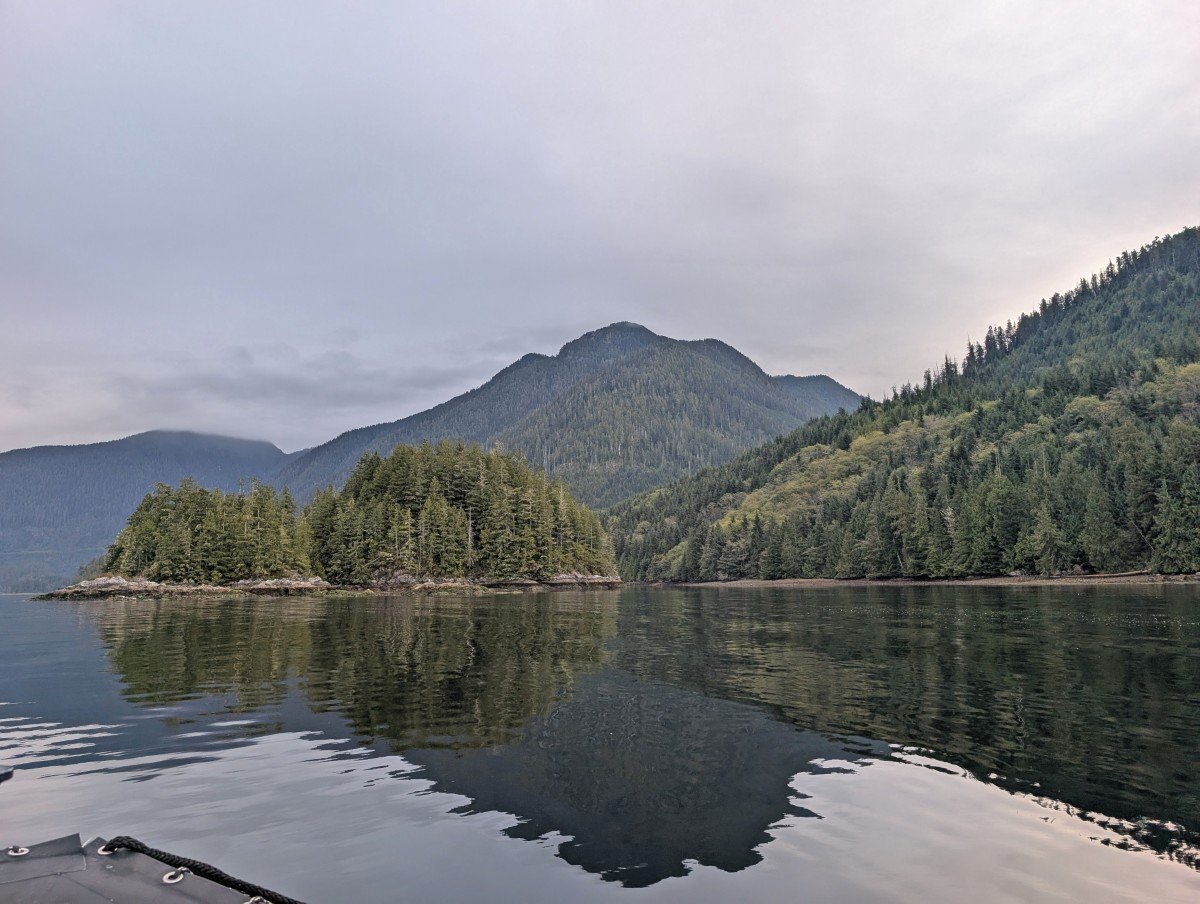
Tofino bear watching with Long Beach Nature Tours
Tofino has plenty of wildlife tour operators to choose from. On our most recent trip, we took a three hour Clayoquot wildlife safari with Long Beach Nature Tours (LBNT).
Of all the tour operators we’ve tried in Tofino over the years, LBNT stands out in several ways.
First and foremost, Long Beach Nature Tours is the only local operator that is a member of the Commercial Bear Viewing Association of British Columbia (CBVA). This reflects their high ethical standards and the equal care they take for both bears and their guests. More about the CBVA later in the guide.
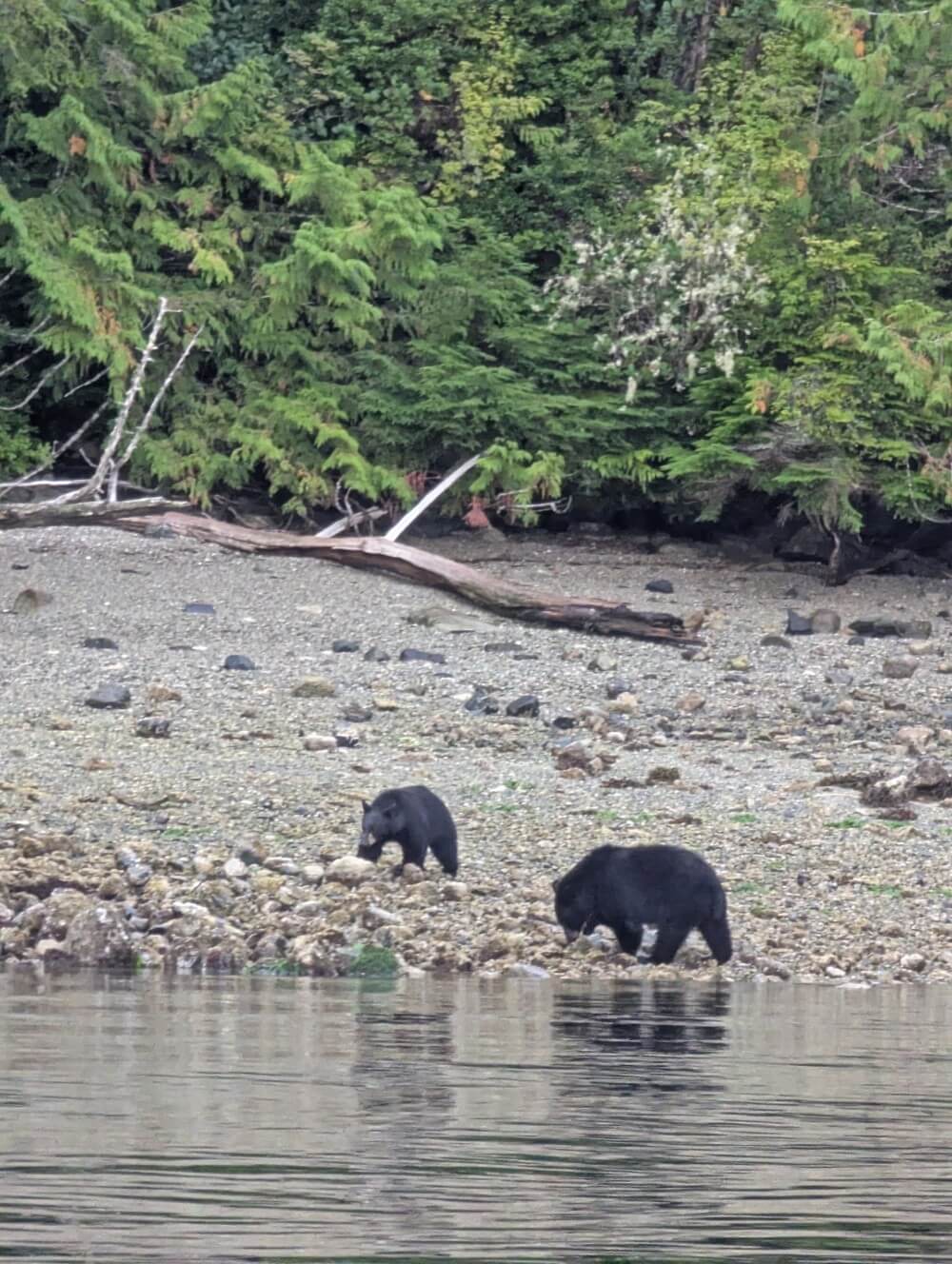
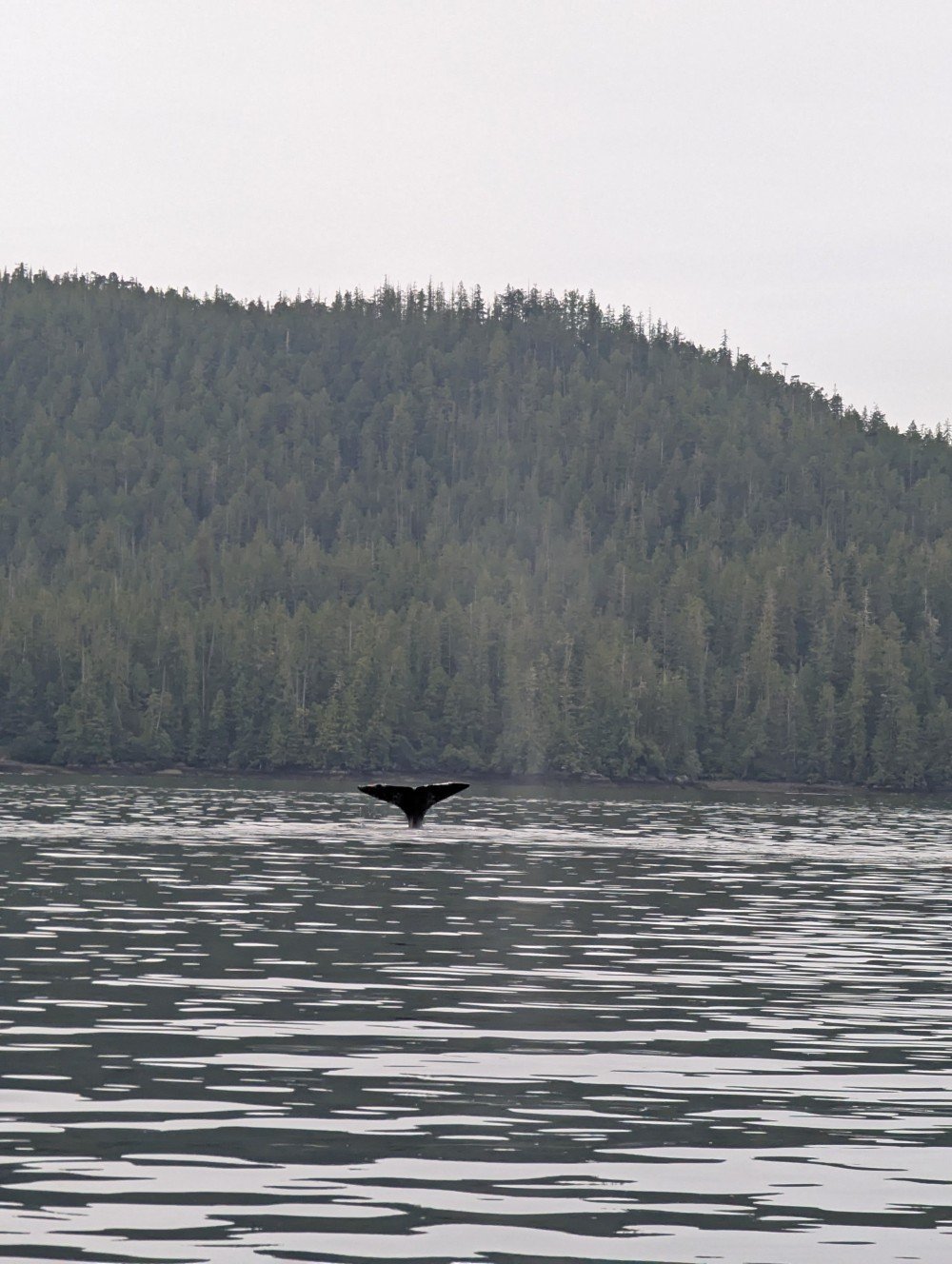
Second, Long Beach Nature Tours utilise Zodiacs, which are rigid inflatable boats. They move faster than regular boats, which is a huge advantage when it comes to wildlife tours – you’ll be able to cover more ground in a shorter period of time.
This type of boat is preferable for wildlife too. Zodiacs have a low impact visual profile and produce less engine noise compared to the larger tour boats. They carry less people as well (typically eight passengers plus the captain), which makes for less disturbance overall.
On the downside, Zodiac usually feel a bit ‘bouncier’ than a regular boat and you can’t move around much. For those prone to motion sickness, however, the open-air design can be a blessing compared to an enclosed vessel.
LBNT’s Clayoquot wildlife safaris are timed to coincide with when the local wildlife is most active. Depending on the tides, this may mean an early morning. But honestly, as you’ll find out, it’s absolutely worth it. Especially if sunrise happens to be around the same time as well!
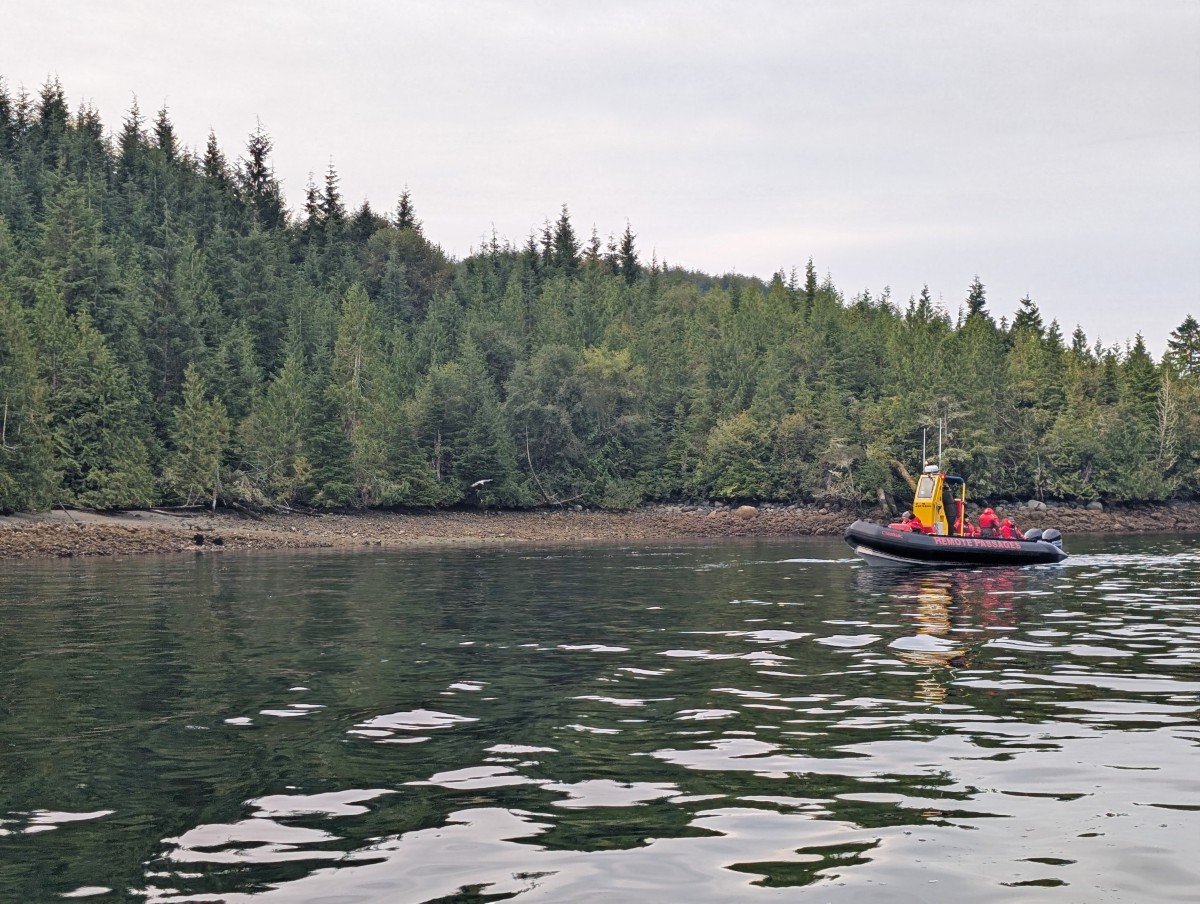
Long Beach Nature Tours bear watching experience
Our three hour Clayoquot wildlife safari experience started in the dark, at 6.30am. We felt like the only ones awake in all of Tofino. Waivers signed and sailing jackets donned, we were soon walking down the street to the wharf with the rest of the group.
Captain Chris, now in his fifth season with LBNT, was at the helm of our Zodiac and enthusiastic to lead another tour. After a safety talk, he explained that we would be circumnavigating nearby Meares Island (Wanachus-Hilthuuis).
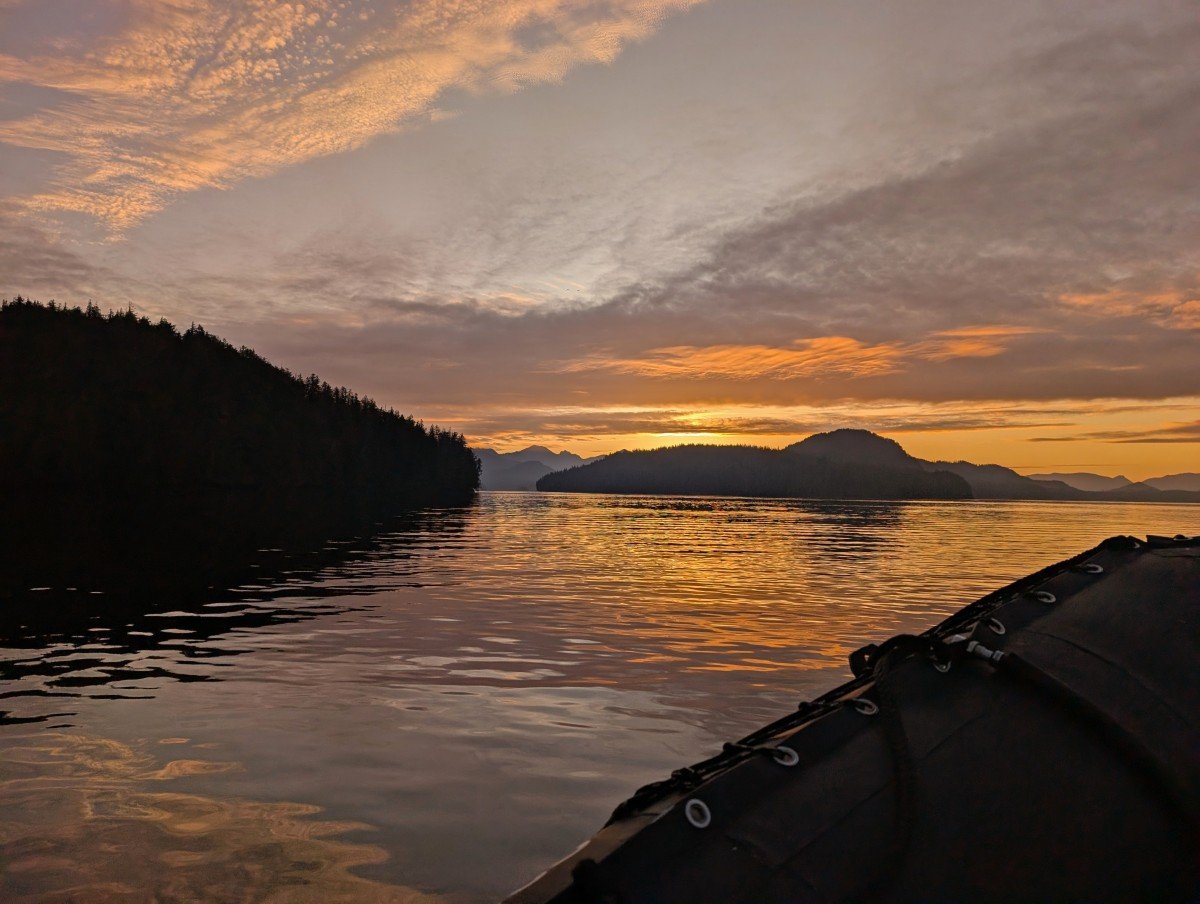
The timing of our trip was perfect, with the sun rising as we headed east towards Dawley Passage. We even saw a few bald eagles flying close to us.
It wasn’t long before our first sighting – a mother black bear and her second-year cub foraging along the shoreline.
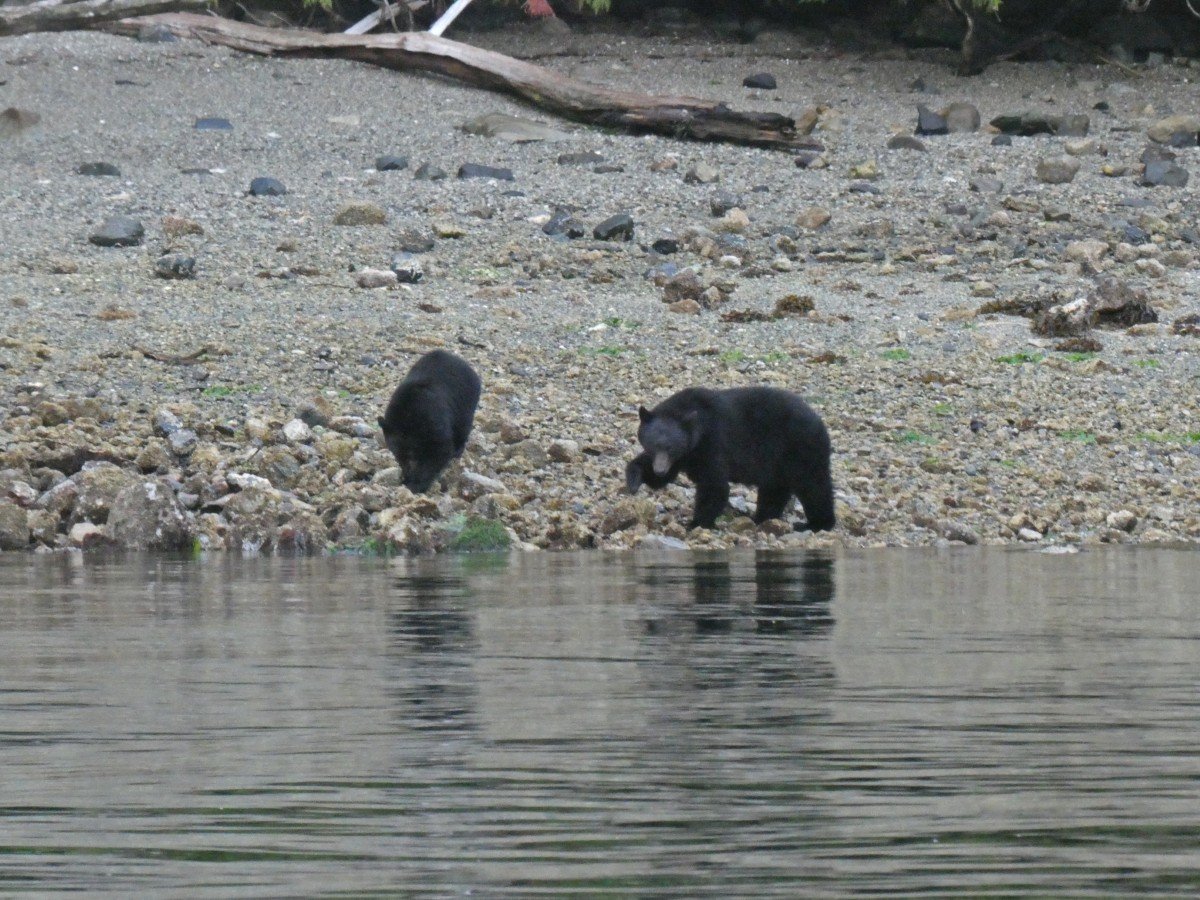
They lifted rocks in search of small crabs, clams, and small fish, also clearly enjoying snacking on barnacles, which we could hear crunching. Barnacles are a high-protein food for bears, though their hard shells wear down their teeth.
Our second encounter was one I was very familiar with – harbour seals. The difference with these seals, however, were their colours. Ranging from creamy beige to nearly black, each one displayed the most wonderful mottled patterns against the seaweed covered rock bluff.
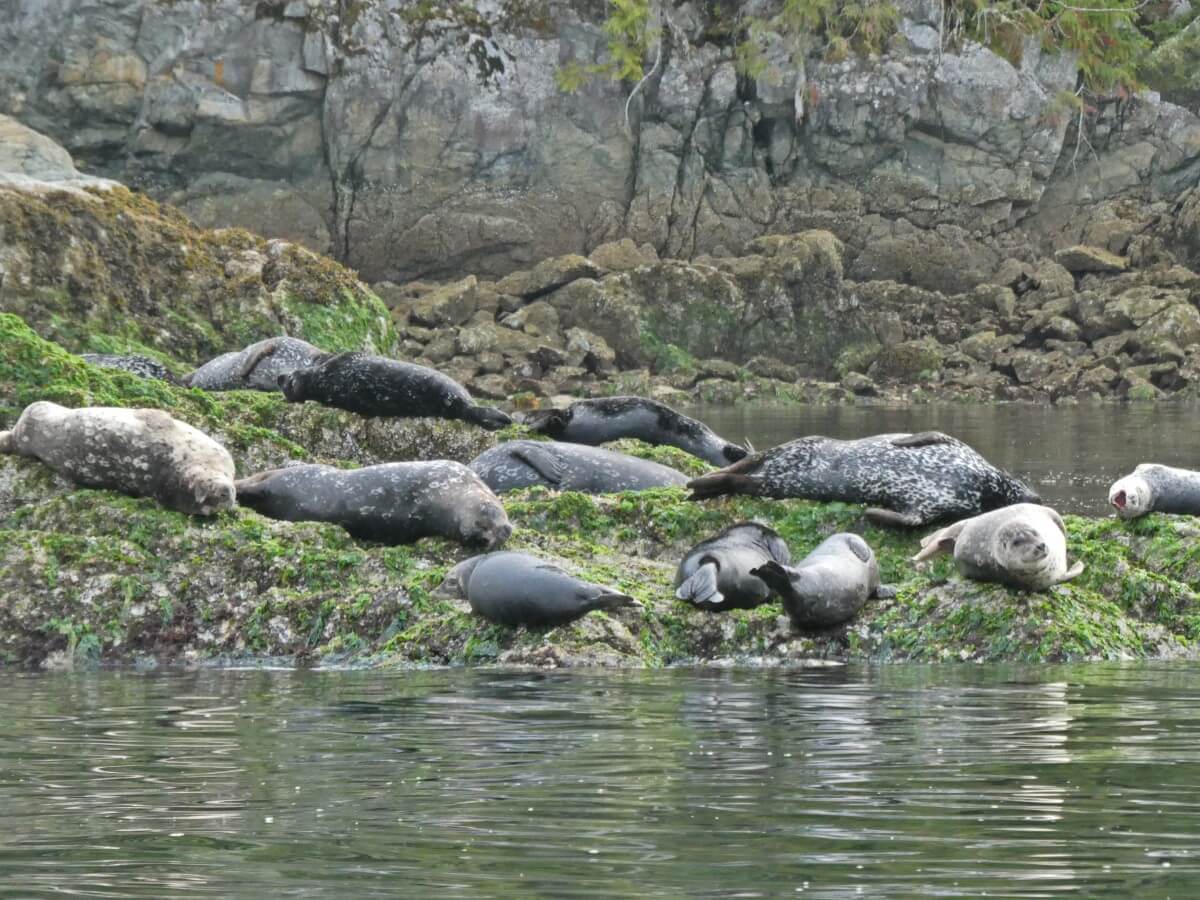
Not long after leaving the seals, we heard a whoosh. A whale blow!
This was ‘Orange Crush,’ a female gray whale who has become something of a local resident. Migrating gray whales don’t usually roam the channels behind Meares Island, especially outside migration season, but Orange Crush clearly favours this area. Chris spoke of her like an old friend.
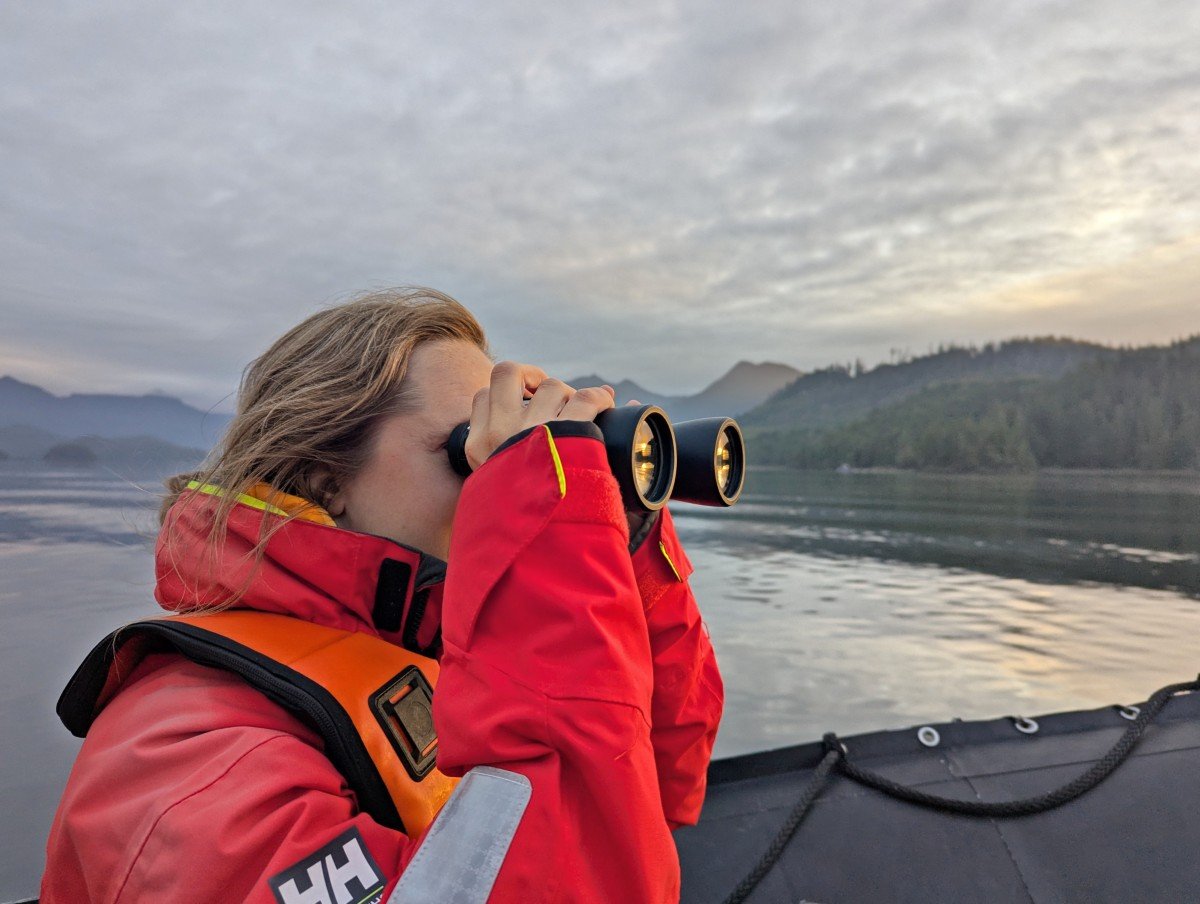
Our last sighting was my favourite – two huge sea otter rafts! To stay together, sea otters link paws, forming a large, furry raft as they float. Along the way, they groom, snack, and chatter with one another. This was the most sea otters I’ve ever seen before and it was the cutest sight.
And to think, as Chris explained, sea otters were once endangered in this area. I could have watched them for hours. Back at the office, we were treated to hot drinks and croissants while going over the map and highlights of the day – the perfect ending to an extraordinary tour!
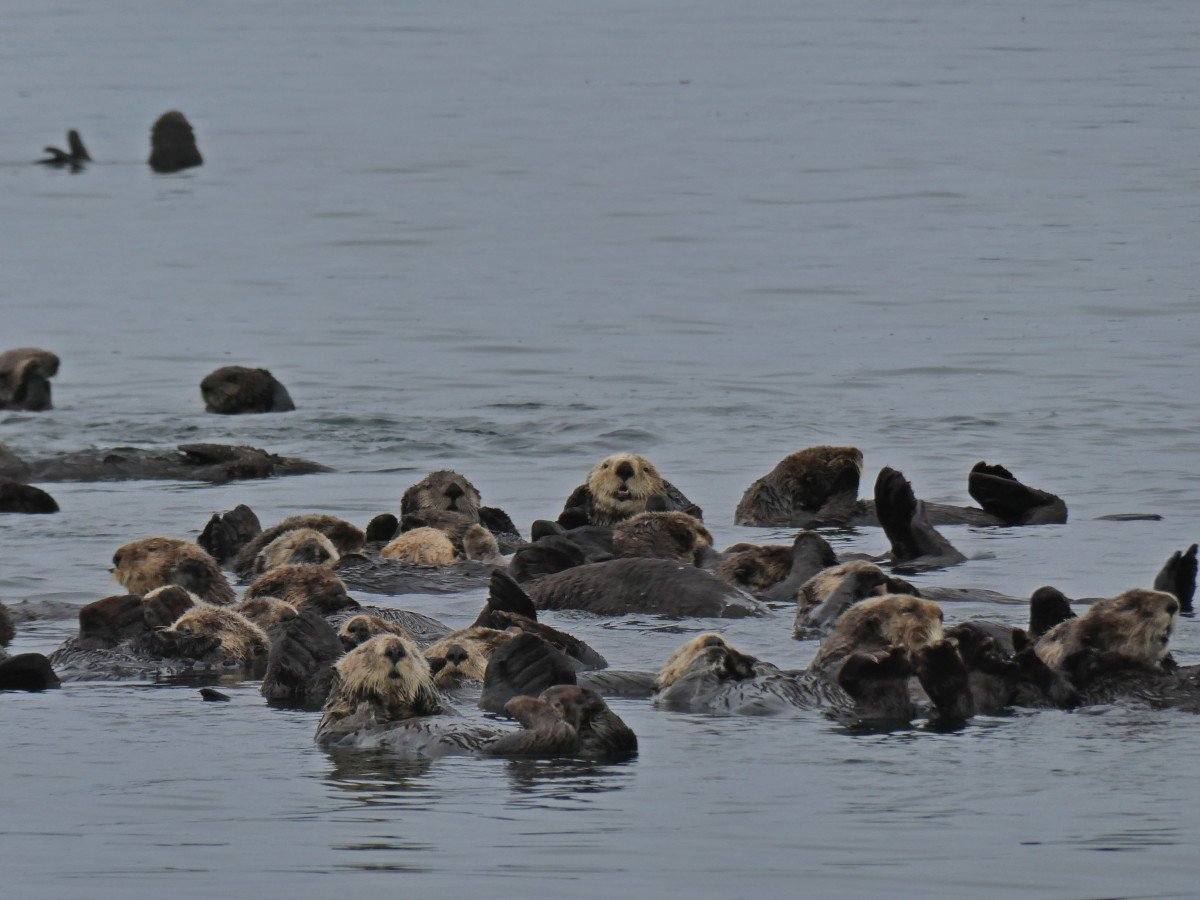
The best time to go
I always say that there’s no bad time of year to go to Tofino. Each season offers something special and we’ve tried them all.
When it comes to wildlife tours, however, the main viewing season is March to October. Some tour operators continue a little later into fall (mid November).
The timing is based on seasonal wildlife patterns, such as the gray whales migrating along the coast from Mexico and humpbacks returning from Hawai’i.
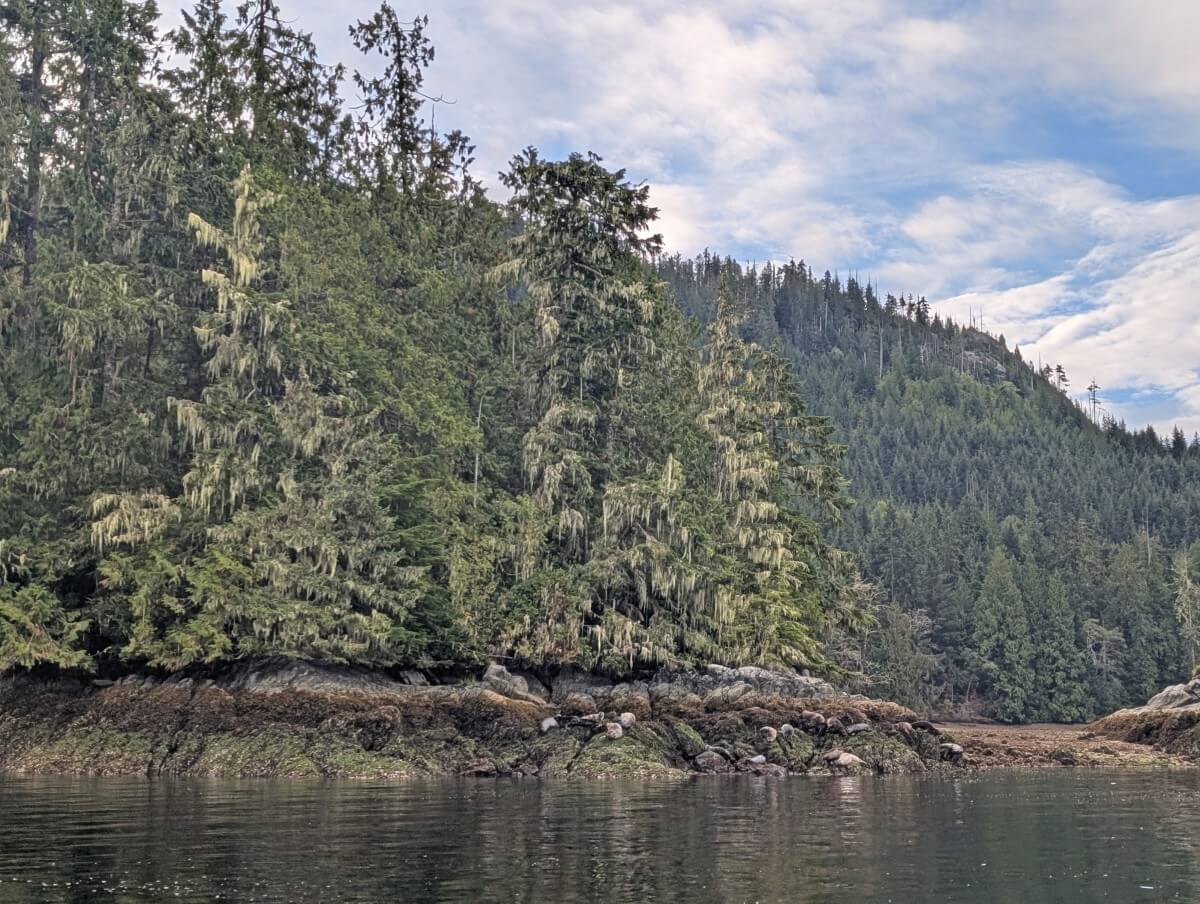
Long Beach Nature Tours operate Clayoquot wildlife safaris from the start of May to the end of September.
According to our guides, wildlife sightings are plentiful throughout the season so there’s no ‘wrong’ time to visit. The end of June, however, is consistently very good overall. Our own experience in late September proved exceptionally rewarding, with sightings of whales, bears, otters, eagles and seals.
Weather-wise, Tofino is usually drier in the summer months. Having said that, it’s still a coastal destination lined by temperate rainforest, so temperatures may be cooler than you may expect.
Tofino is also at its busiest in July and August, so be prepared for higher prices, greater demand and more people. If you prefer to avoid the busy peak, plan a trip for May, early/mid June or September.
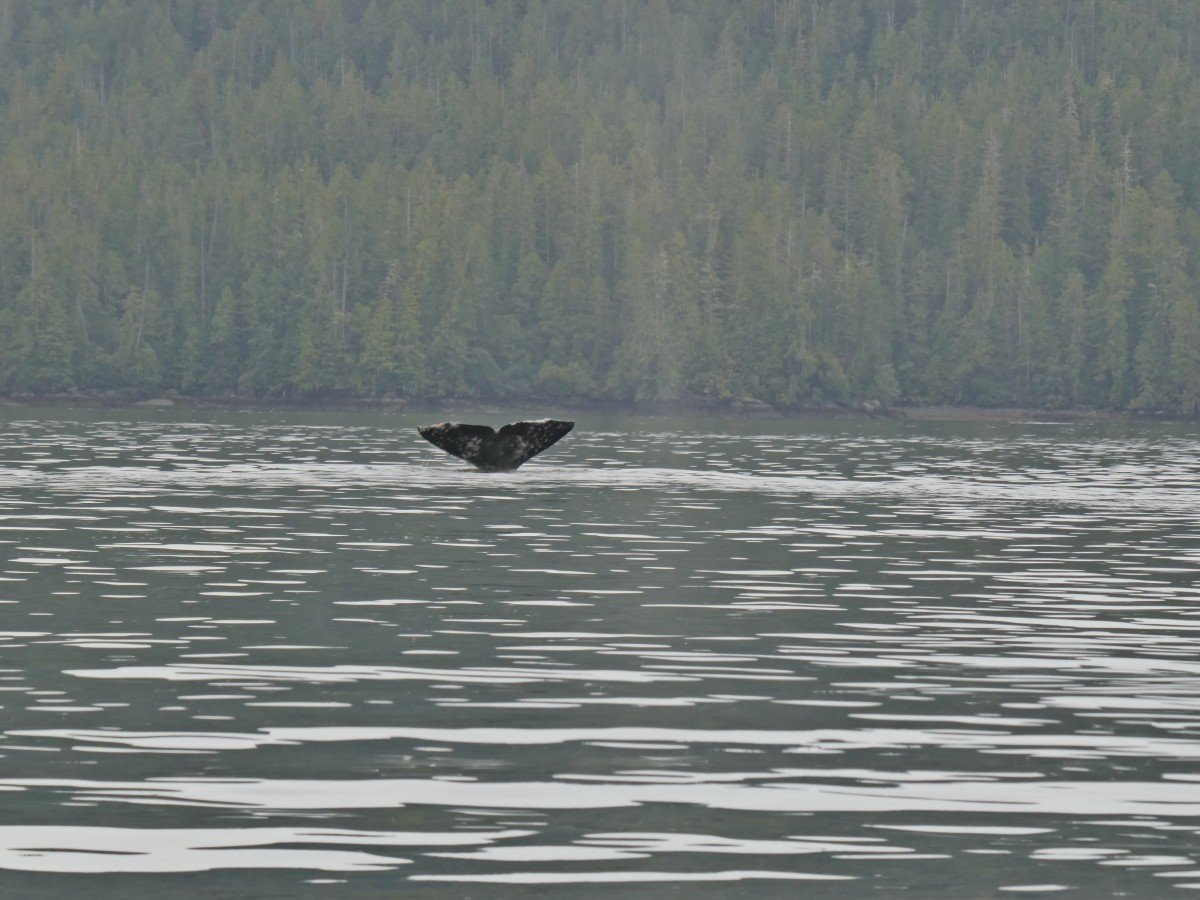
What to bring and wear
Long Beach Nature Tours provide each guest with a warm sailing jacket and pants, as well as a comfortable low-profile inflatable lifejacket. The sailing jacket has a built-in hood, which is handy in case of rain.
I would recommend bringing the following:
- Layers. It can be chilly on the water, even in the summer months. Plan to wear full length pants (trousers) and a long sleeved top. Bring a sweater/jumper/jacket as well
- Closed-toe shoes. With the tour taking place on a Zodiac boat, closed-toe shoes are best for this tour (hiking shoes, runners, boots etc)
- Buff/warm hat/gloves. Again, it can be chilly on the water and these warm accessories may be very welcome!
- Water. Bring your own water for the tour. As mentioned, refreshments are provided afterwards
- Snacks. If the tour is early (ours started at 7am), you may find having some snacks helpful. Due to the timing of the tour, we left before our hotel started serving breakfast
- Binoculars. If you have your own binoculars, bring them. We borrowed some from Long Beach Nature Tours – they were excellent, with auto-focus
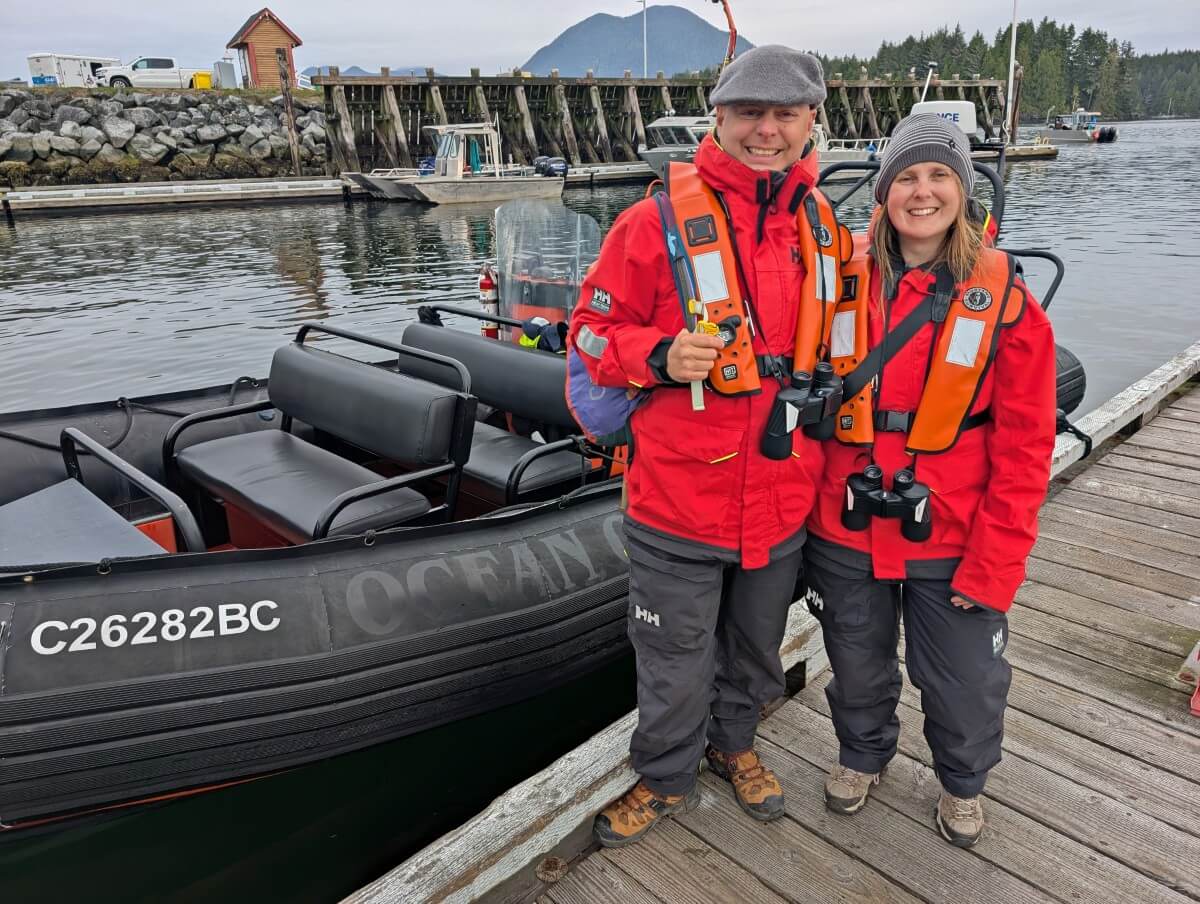
If you suffer from seasickness, I would plan to take nausea medication (such as Gravol) before the tour starts. Consider bringing some ginger candies (like these ones). Ask the captain to sit in the middle of the Zodiac as this is the area with the least amount of motion.
Please note that guests are asked to arrive at the LBNT office at Storm Light Outfitters in downtown Tofino about 30 minutes before start time of the tour. This is to allow time to everyone to suit up in the aforementioned cosy jackets and pants!
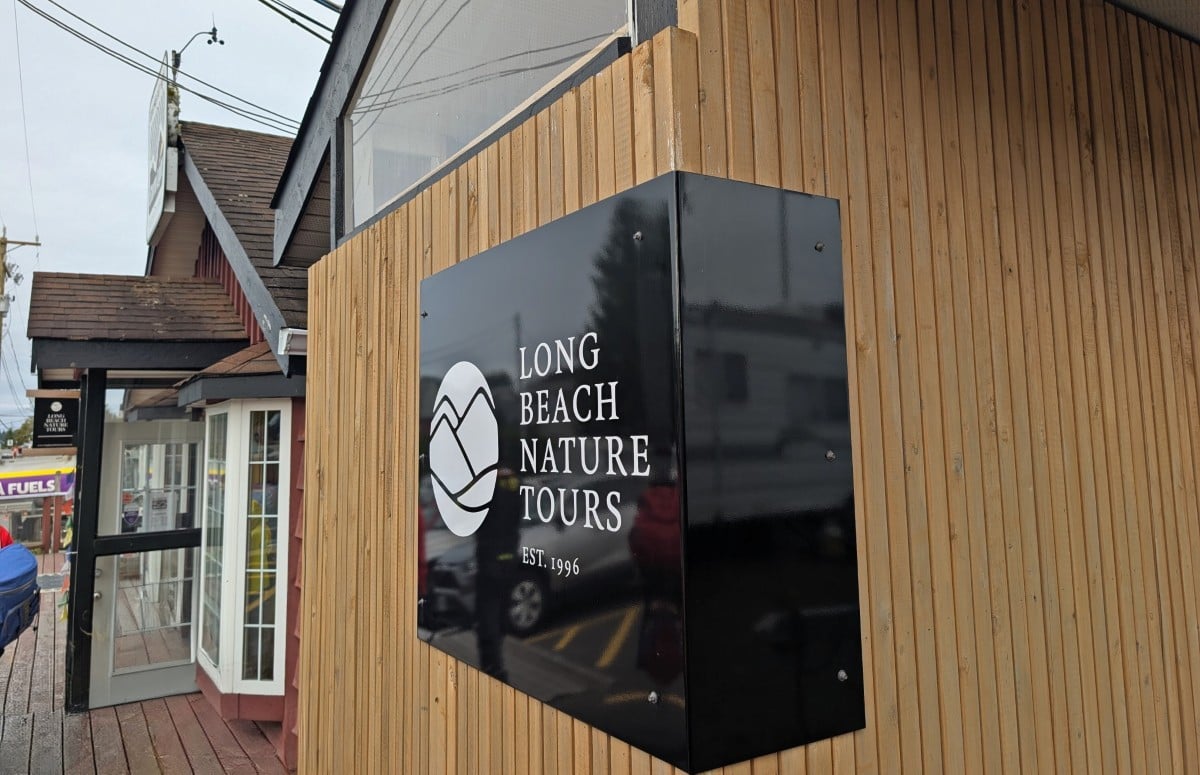
Commercial Bear Viewing Association membership
Long Beach Nature Tours is a member of the Commercial Bear Viewing Association of British Columbia (CBVA), the only one in Tofino. JR and I are very selective when it comes to activities related to animals, so this accreditation was important to us.
The CBVA currently includes 26 members committed to safeguarding wild bears and their habitats. Each must adhere to a strict Code of Conduct and Best Management Practices to maintain the highest standards of ethical and sustainable bear viewing, for the benefit of both bears and guests.
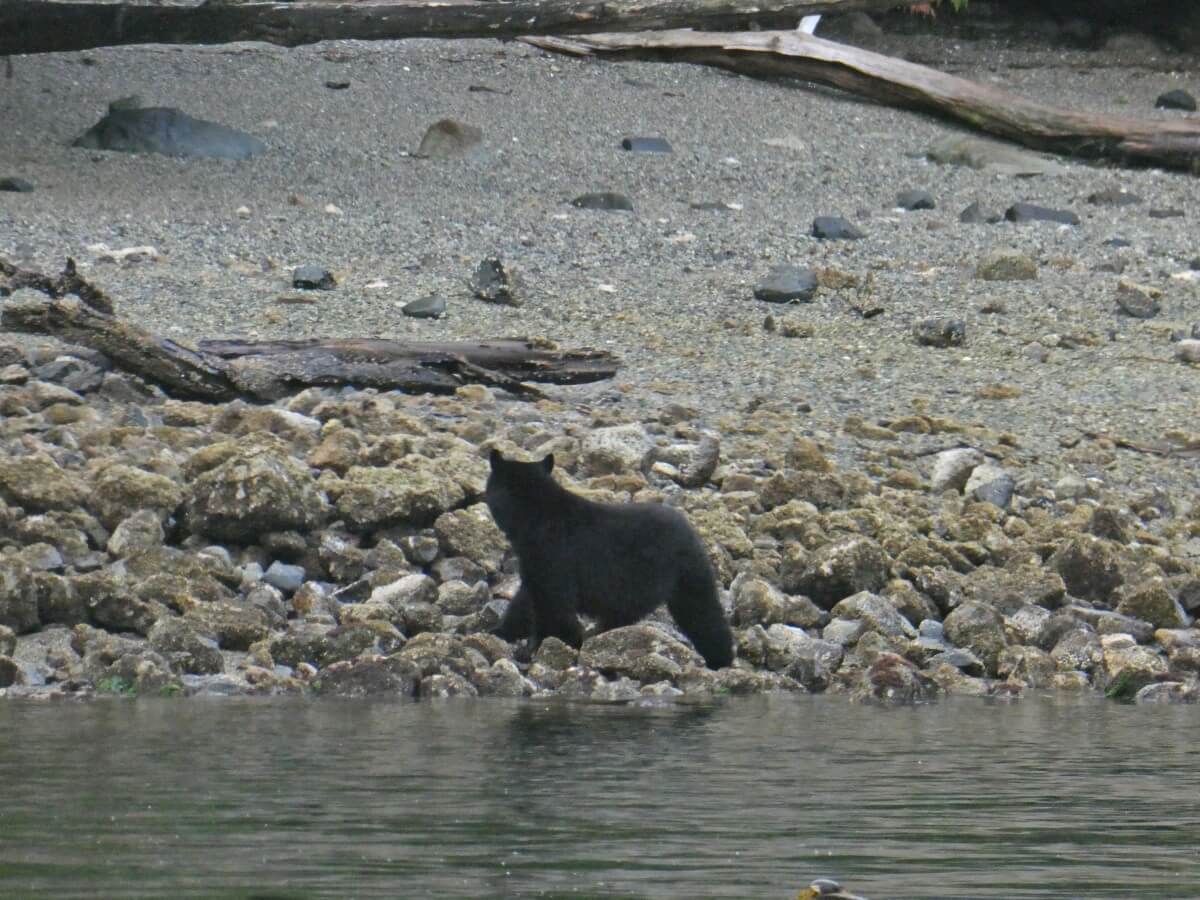
Minimal impact viewing is at the heart of the CBVA’s philosophy. Bears must be free to feed, rest, and move about undisturbed by human presence.
The association’s Best Management Practices are designed to be adaptive; if any negative impacts are observed, viewing practices are quickly adjusted.
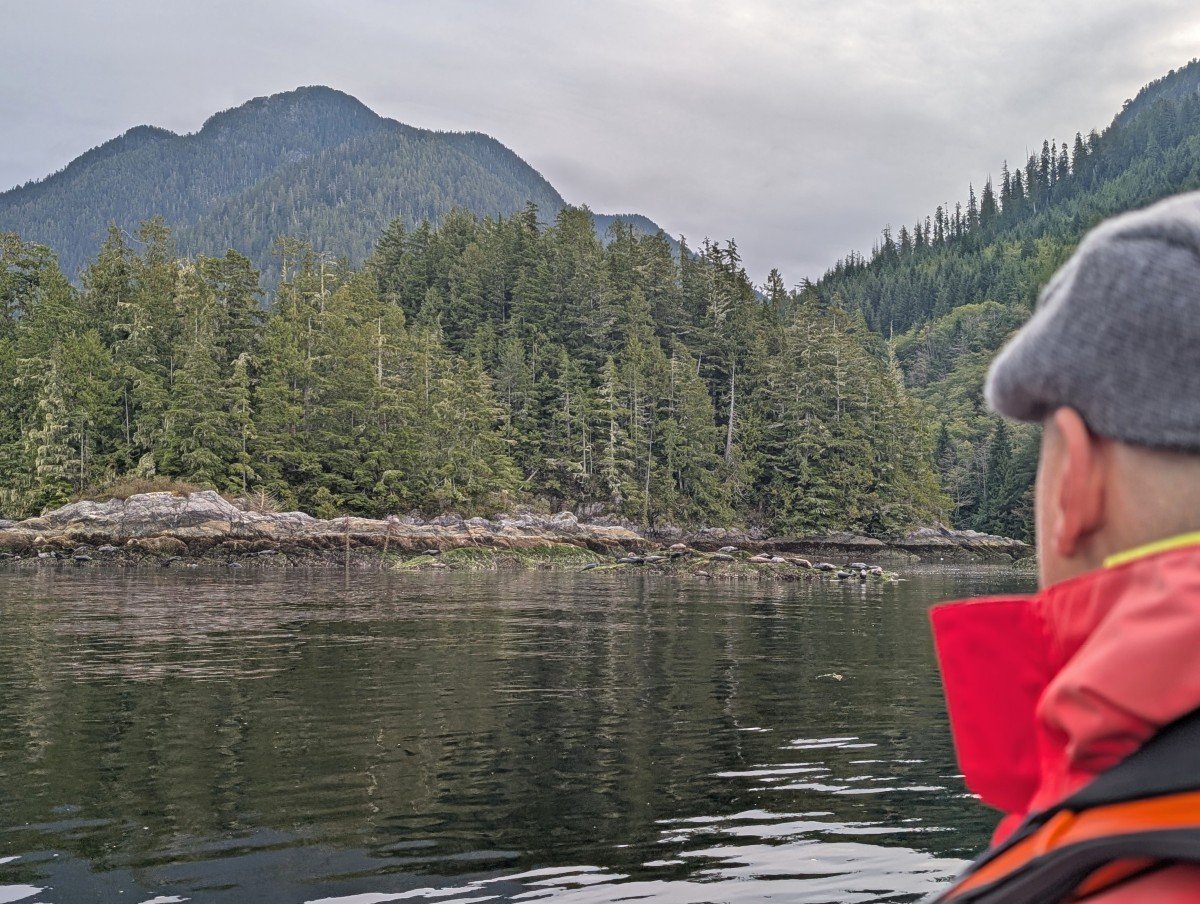
CBVA operates a guide certification program. The Level 1 course covers topics such as bear biology, ecology, behaviour, bear–human interactions, impact reduction, and visitor education. By Level 3, guides must have completed more than 350 hours of supervised bear-viewing experience.
When joining a CBVA member tour, expect the following:
- Knowledgeable guides – Carefully planned boundaries with predictable behaviour
- Minimal disturbance – Guides promote quiet viewing with limited noise and movement
- Respectful viewing from a distance – Ensuring that bears have personal space
- Group safety – Guests stay in a small, close group and follow guide instructions at all times
- Organised visitation – Careful coordination with other tour groups to avoid overcrowding
- Controlled food and waste – Bears cannot gain access to food and trash
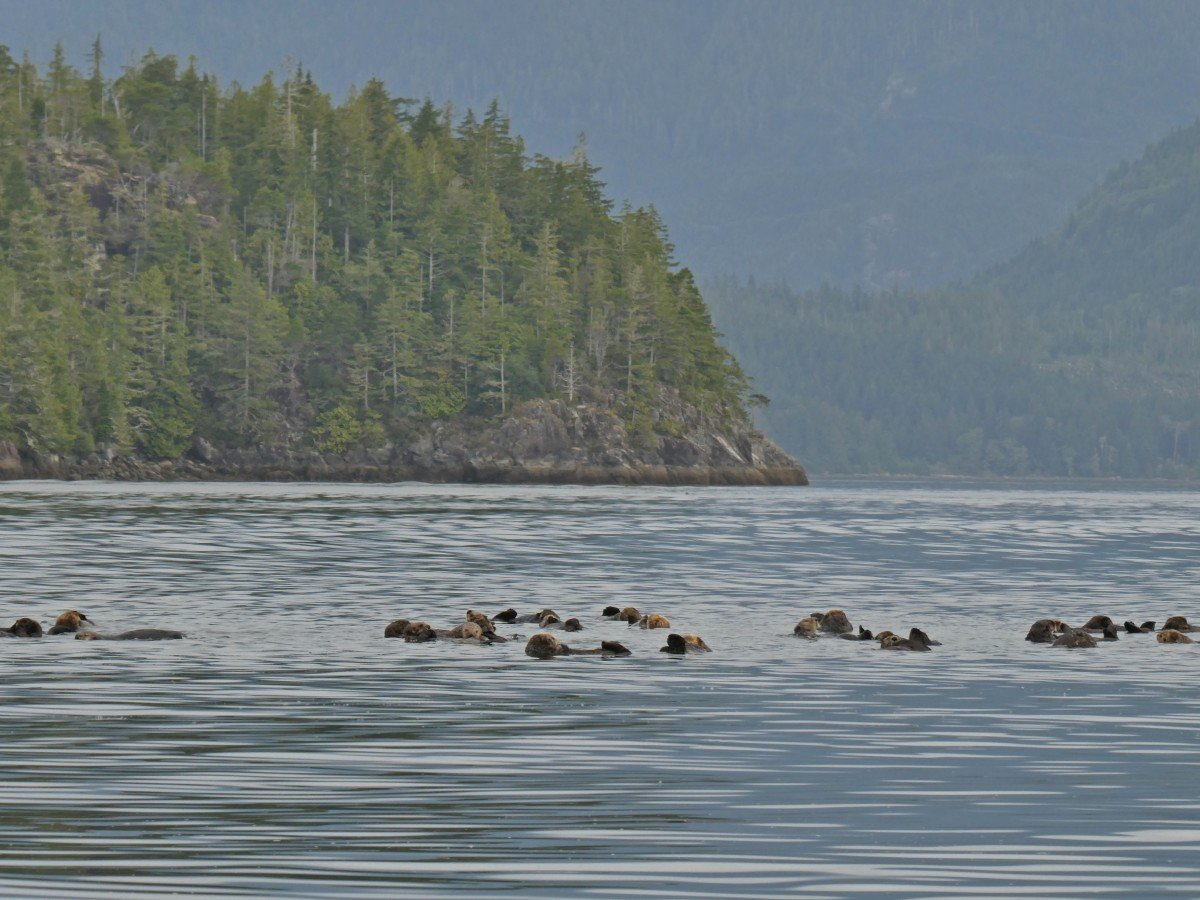
Visiting Tofino: Essential guide
Now we’ve covered everything you need to know about Long Beach Nature Tours, it’s time to plan the rest of your Tofino getaway!
How to get to Tofino
Tofino sits on the West Coast of Vancouver Island, a long way from any major cities. It’s located on the traditional territory of the Nuu-chah-nulth people.
Wild, windswept and wonderfully remote, there’s only one road in and out of Tofino – Highway 4.
Most travellers arrive via car with a minimum journey time of at least 2 hours (from Port Alberni) or 3 hours (from Nanaimo).
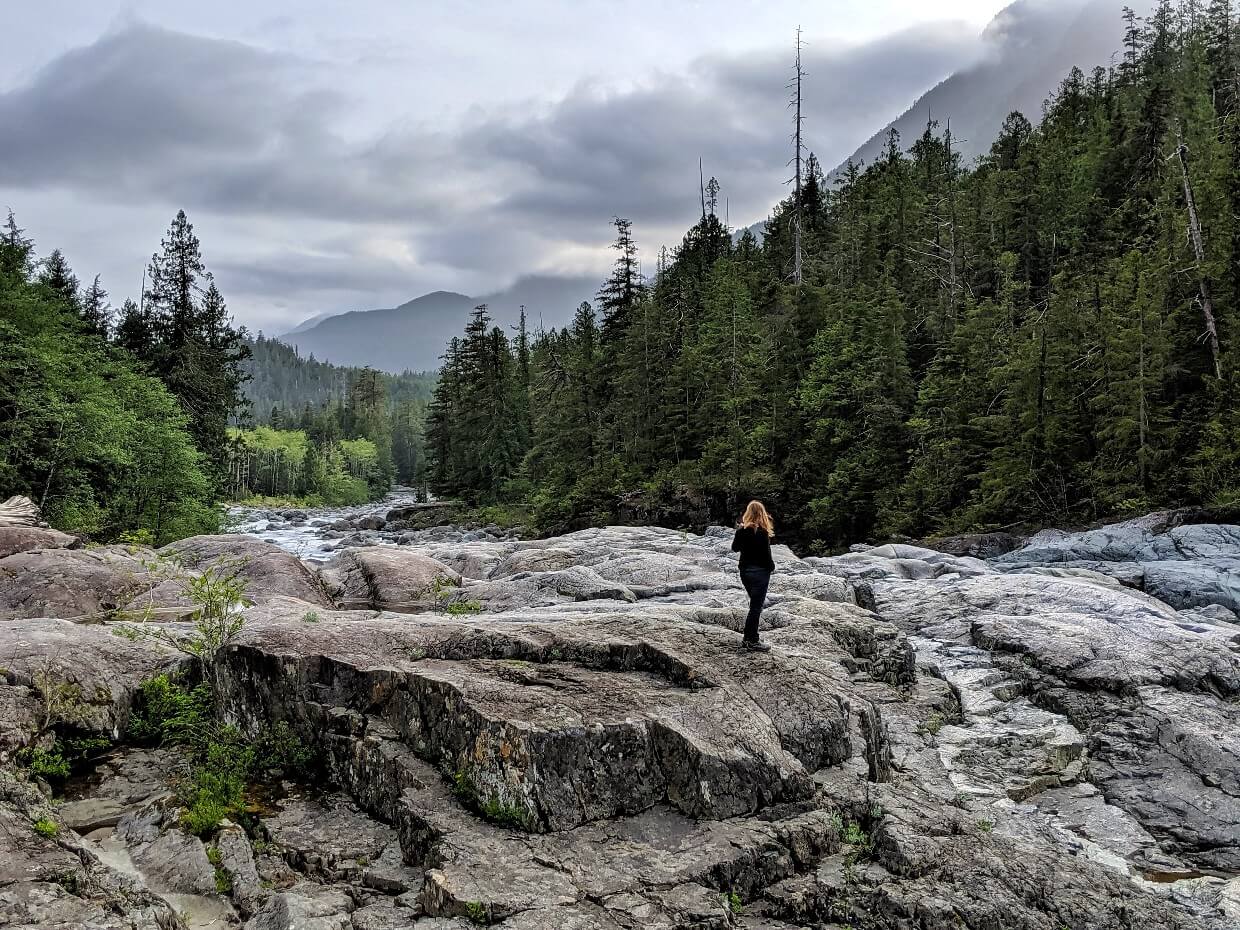
The drive from Nanaimo is truly one of British Columbia’s most scenic road trips, offering countless incredible stops along the way.
My favourite places to visit along the way include Cathedral Grove, the Hole-in-the-Wall hike, Little Qualicum Falls, Englishman River Falls, Sproat Lake, Taylor River and Wally Creek. Check out the details in our Nanaimo to Tofino road trip guide.
It is possible to fly to Tofino (YAZ airport), with services by Pacific Coastal Airlines and Harbour Air. Rental vehicles are available at the airport.
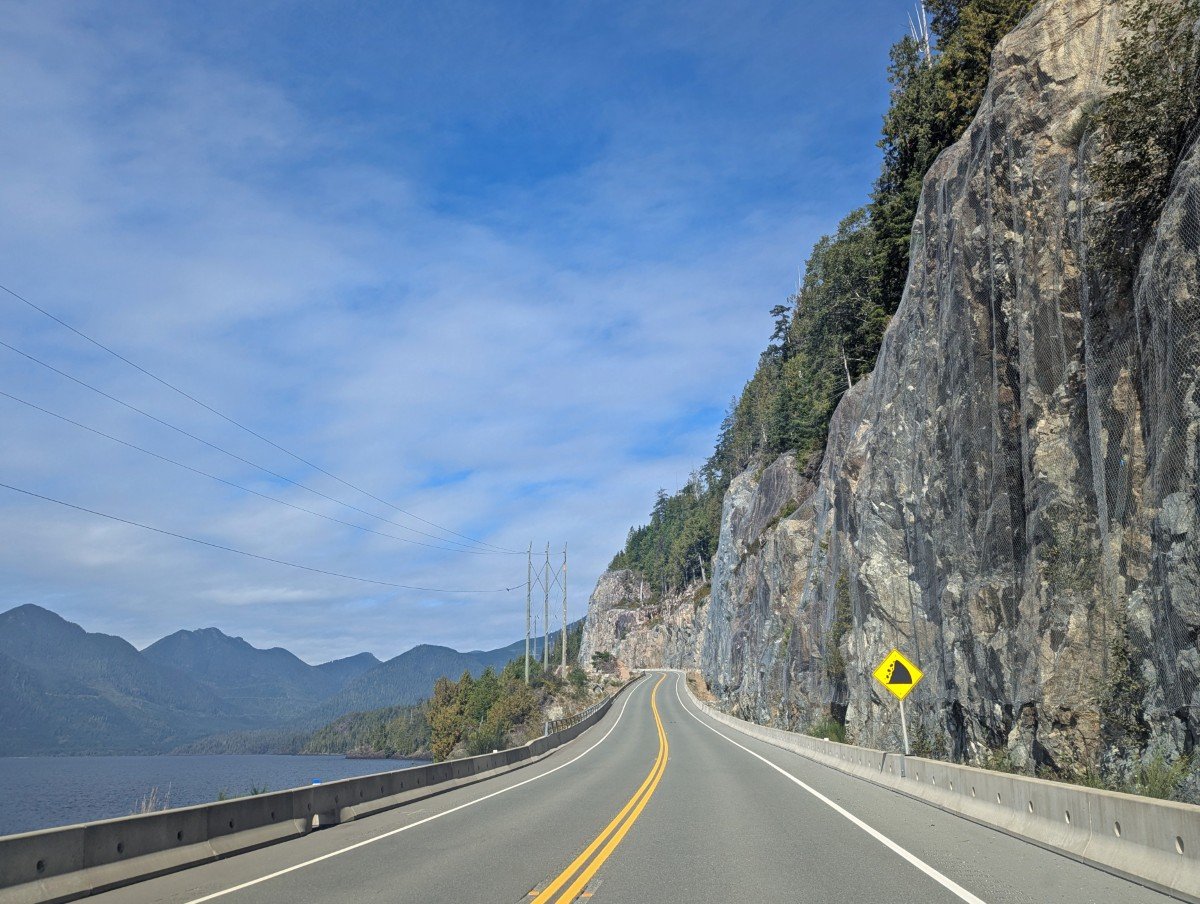
The Tofino Express Bus runs to Ucluelet, Nanaimo and Port Alberni, with connections to other Island destinations.
From the BC mainland, the closest ferry terminal to Tofino is in Departure Bay, Nanaimo. Duke Point is close as well but is further away from the city of Nanaimo.
Travelling to Vancouver Island for a dedicated trip? I’d recommend flying onto the island and renting a vehicle there. The ferry ride from the mainland is beautiful but keep in mind that it adds around at least 1.5 to 2 hours each way, plus waiting time (longer in the summer months).
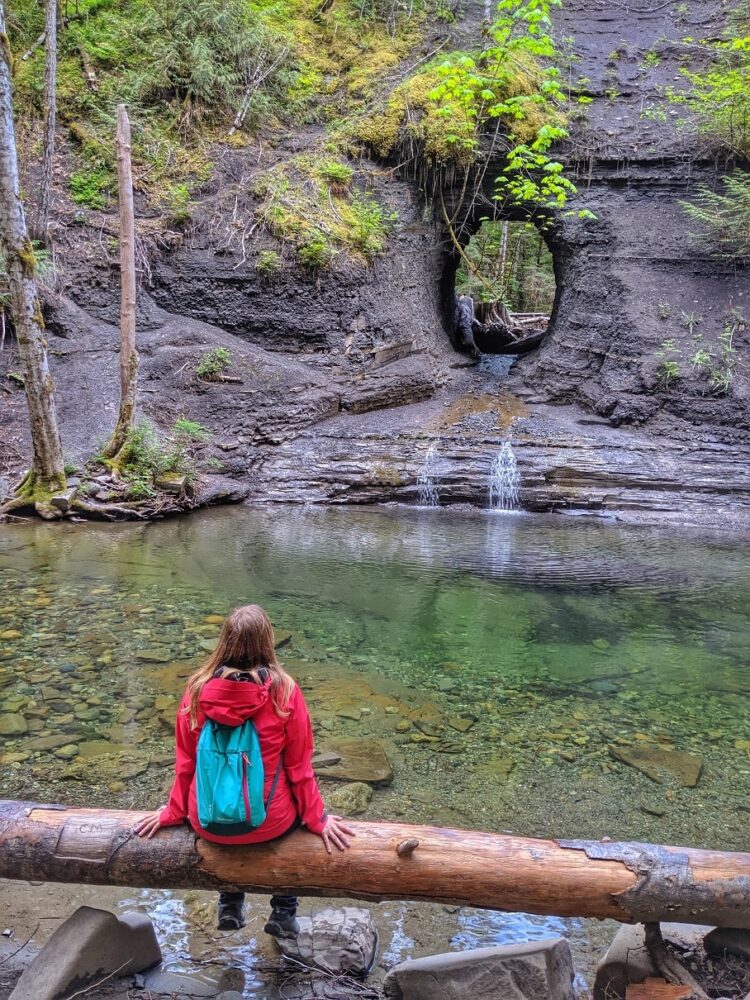
Where to stay
We’ve stayed at many places in Tofino over the years, from campgrounds and motels to hotels and resorts.
On this trip to Tofino, we stayed at the beautiful Best Western Plus Tin Wis Resort. Situated right on Mackenzie Beach, most rooms have gorgeous ocean views and quick access to the sand. We could hear the ocean waves from our bed!
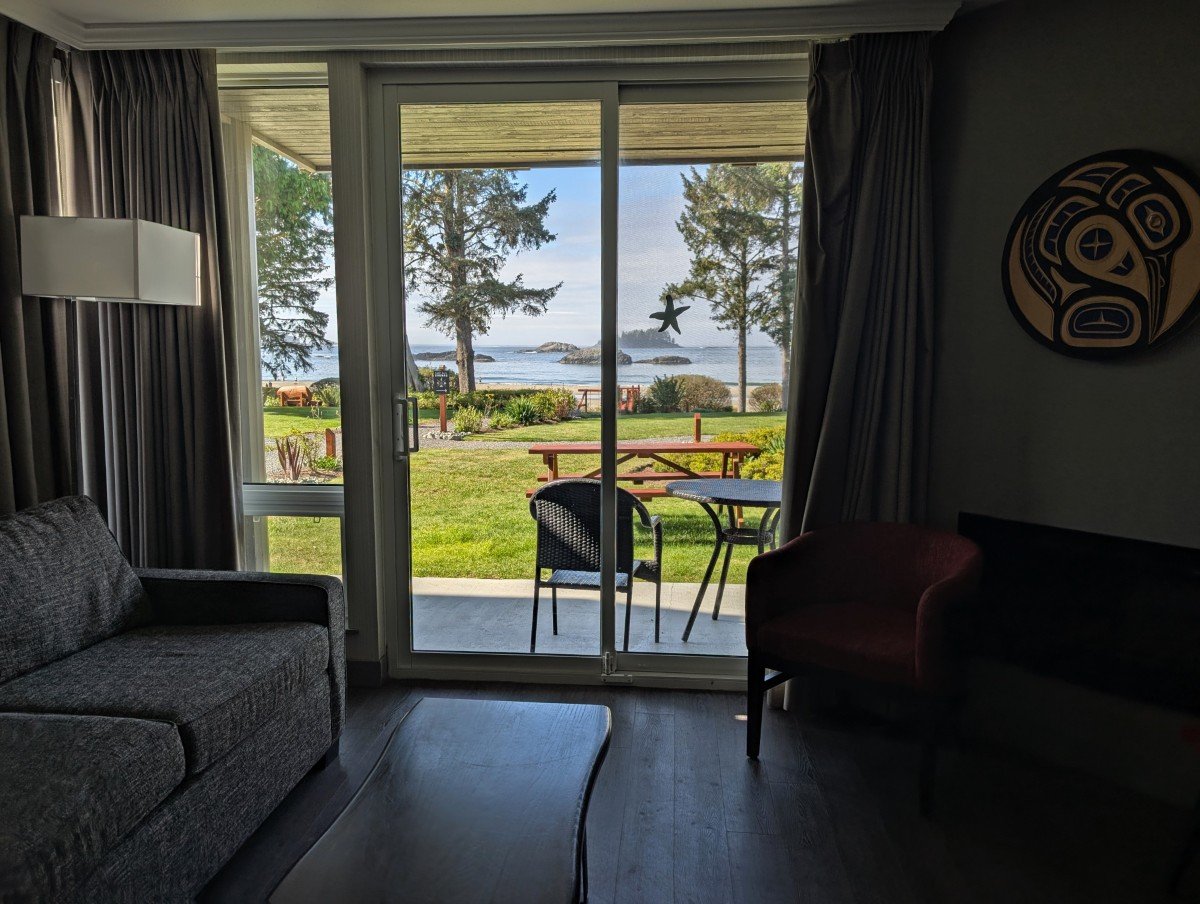
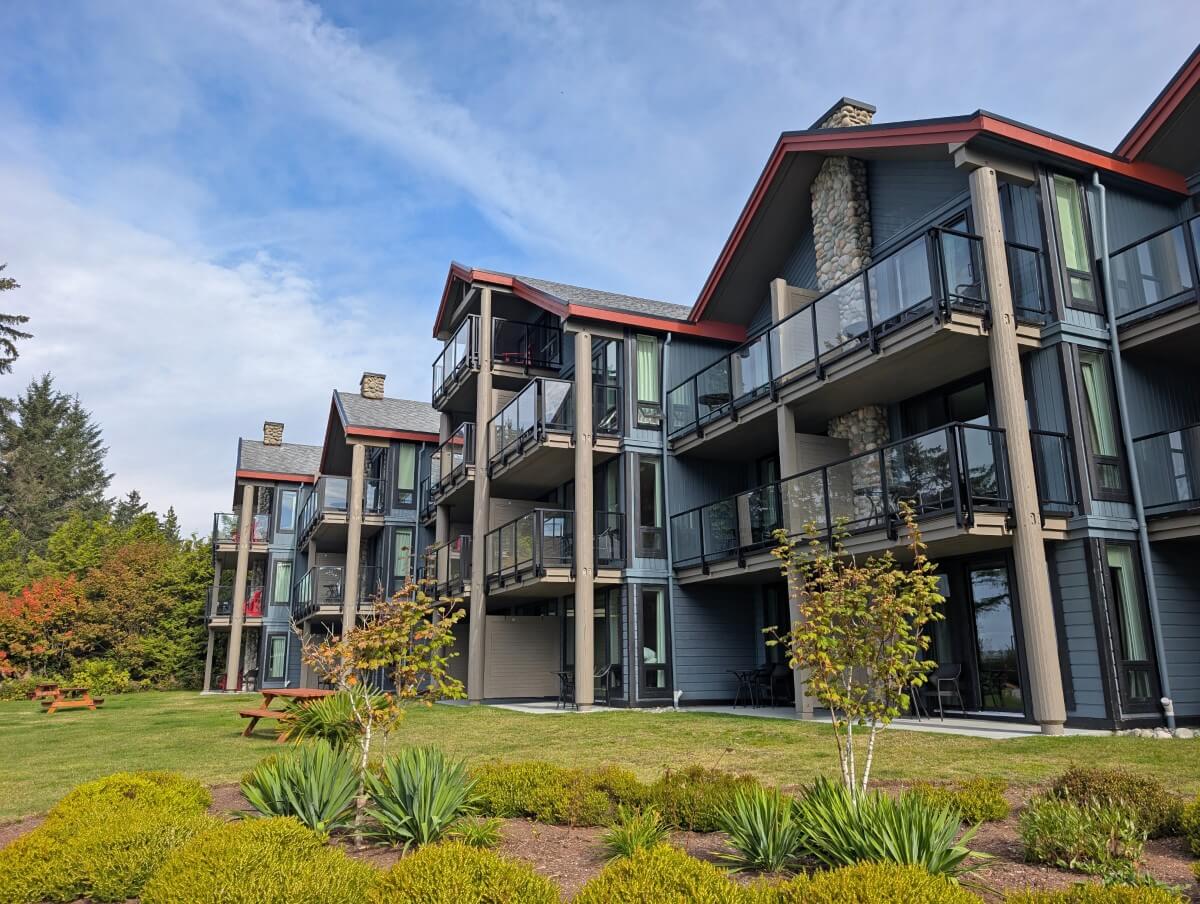
A lower cost alternative is Ocean Village, also on Mackenzie Beach. The distinctive ‘beehive’ cabins are cosy and comfortable, supplied with everything you need to feel at home (plus great views!)
Green Point Campground is the premier campspot in the Tofino area. Situated on a forested bluff above spectacular Long Beach in Pacific Rim National Park, campers can access the golden sands via a short (5 minute) downhill trail. Reservations are highly competitive and open each January.
For more recommendations, head to our dedicated Tofino accommodation guide!
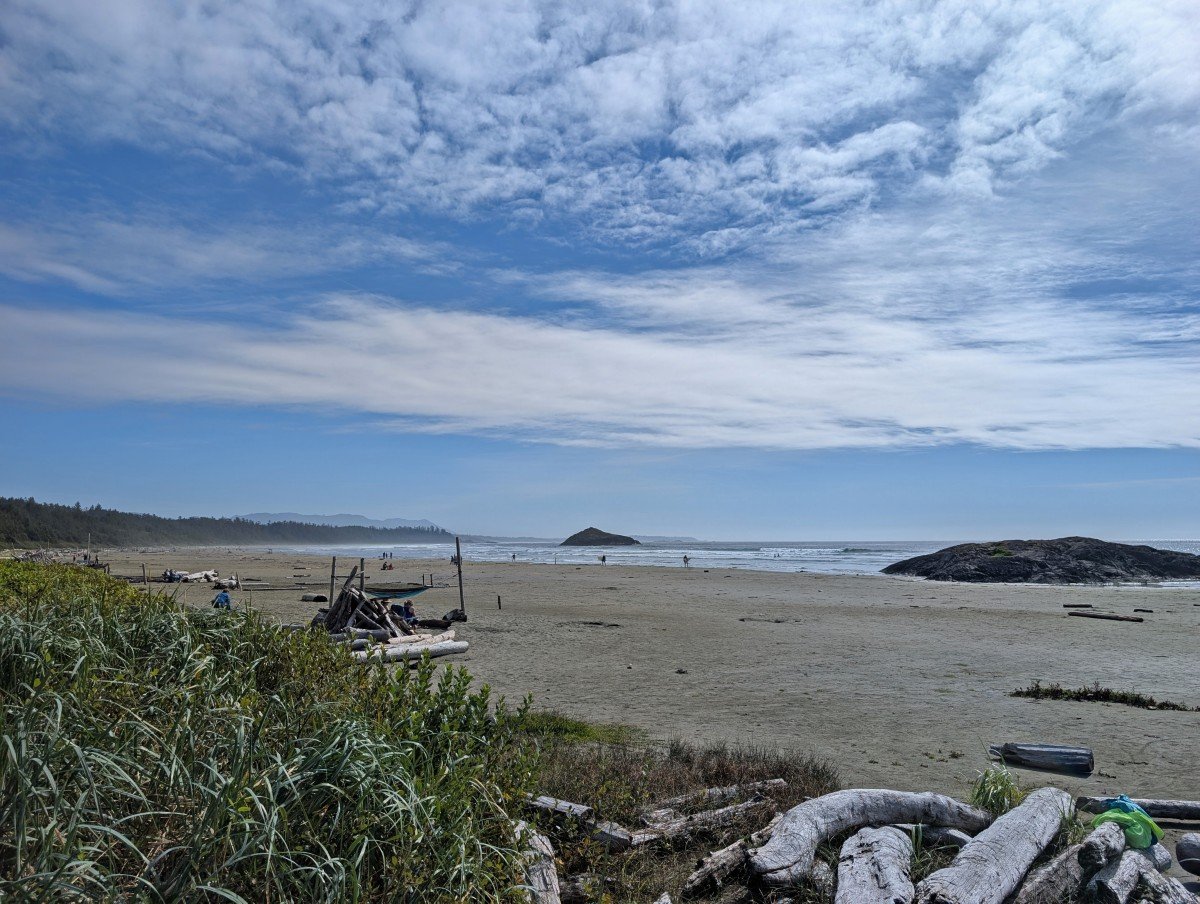
Other great things to do in Tofino
If you love nature, wildlife watching is just one highlight of visiting Tofino. Whatever do you, hiking is a must. Some of my top trails are:
- Tonquin Trail. Close to town, this short hike hugs the coastline, offering fantastic elevated viewpoints of crashing waves, nearby islands and the horizon beyond. There is access to several sandy beaches with rockpools
- Rainforest, Pacific Rim National Park (park pass required). Two 1km long boardwalk trails with huge cathedral-like trees, hanging moss, a carpet of ferns and soft mosses.
- Shorepine Bog, Pacific Rim National Park (park pass required). See a different side to Tofino – swamp terrain with mosses, lichens, medicinal plants and twisting, almost bonsai-like Shore Pine trees.
- Cox Bay Lookout. The super steep, somewhat gnarly climb is more than worth the effort to see breathtaking views of Cox Bay, Clayoquot Sound, the Pacific Ocean and dozens of Vancouver Island peaks

More details on all these hikes in our Tofino hiking guide. If you have time, I’d also suggest a combination paddling/hiking trip to Meares Island (Wanachus-Hilthuuis). There, the Big Tree Trail leads to an incredible 1000 year old Western Red Cedar.
Beyond hiking, my favourite things to do in Tofino include strolling downtown and exploring the local shops, watching the sunset over the harbour, boating to Hot Springs Cove, hanging out on the various beaches, tasting craft beer at the brewery and just relaxing! Surfing is an option too.
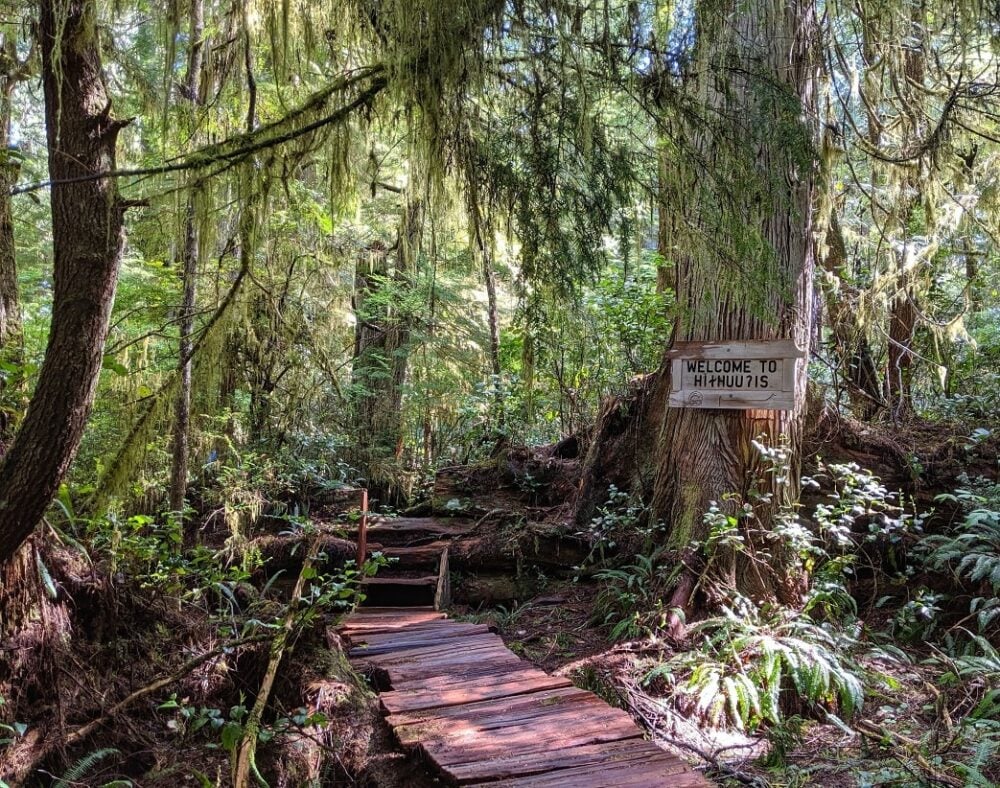
Other Tofino posts you may find helpful
Nanaimo to Tofino Road Trip Guide: 15 Amazing Places to Stop
A Complete Guide to Tofino Storm Watching
11 Amazing Short Hikes Near Tofino
8 of the Best (Tried + Tested!) Places to Stay in Tofino
Tofino Whale Watching: How, When and Why You Need To Go

Planning a trip to Vancouver Island?

Our Vancouver Island Travel Guide features an interactive map with 150+ of the best things to see and do.
The itinerary builder tool makes it easy to create your perfect trip.
Download the app and use offline while travelling!


One half of the Canadian/British couple behind Off Track Travel, Gemma is happiest when hiking on the trail or planning the next big travel adventure. JR and Gemma are currently based in the beautiful Okanagan Valley, British Columbia, Canada. Consider buying us a coffee if you have find any of our guides helpful!

